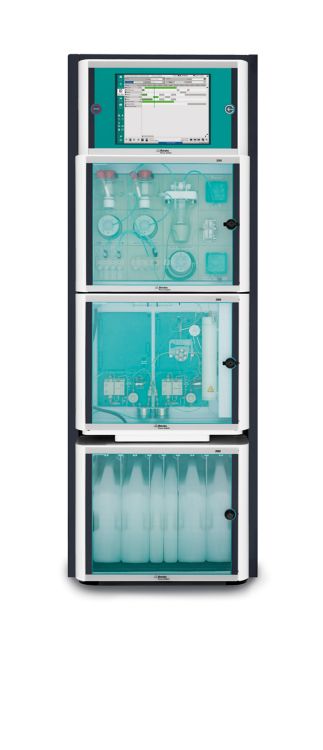In industrial cooling water systems, copper and its alloys are widely used because of their superior heat transfer properties. These materials are susceptible to corrosion, which causes two basic problems. The first and most obvious is the failure of equipment with the resultant cost of replacement and plant downtime. The second is decreased plant efficiency due to loss of heat transfer—the result of heat exchanger fouling caused by the accumulation of corrosion products. Regardless of the type of corrosion, power plants must ensure that it occurs as little as possible. On the other hand, they can monitor substances and parameters that indicate corrosion, such as conductivity, pH value, or the presence of corroding anions and cations. On the other hand, power plants can make sure that added corrosion inhibitors are present in sufficient amounts to prevent equipment failures.
There are two primary concerns about corroded copper from the heat exchanger. First, from an environmental standpoint, soluble copper is toxic and needs to be properly controlled in any discharge stream. Second, soluble copper will plate out on mild steel surfaces and form galvanic corrosion sites that result in severe localized corrosion (also known as pitting) and premature failure of steel heat exchangers. Every cooling water system should include a method of monitoring corrosion inhibitors in the system.
Triazoles (e.g., tolyltriazole, benzotriazole, and 2-mercaptobenzothiazole) are commonly added in the mg/L range to protect copper and its alloys from corrosion by forming sparingly soluble layers on the surface of the metal. After triazole adsorption, copper-azole complexes are believed to precipitate at the liquid-solid interface, thus protecting the metal substrate from further dissolution. These complexes are prone to oxidation and also react with added microbiocides. As a result, the triazoles have to be replenished, which necessitates regular concentration determinations.
Corrosion chemistry monitoring helps to minimize loss of efficiency and protect the components coming in contact with steam and water against damage. Timely and effective monitoring of power plant water chemistry is critical for maintaining efficiency and safety. By using online analyzers, operators gain the information they need to accurately identify trends and address operational issues before costly problems arise.

These copper corrosion inhibitors are quantified by ion chromatography with direct UV/VIS detection. However, precise, reliable trace analysis requires the method to be automated as much as possible. Inconsistent measurements and slower offline analyses result in fluctuating triazole concentrations in the cooling water. Constant online measurement of the cooling water additives can result in additional cost savings by optimizing parameters and using less chemicals. Metrohm Process Analytics offers a complete solution for this task: the 2060 Ion Chromatograph (IC) Process Analyzer. In a single analysis, the 2060 IC is able to measure numerous ionic and UV-active compounds in aqueous media from ng/L to % concentrations. The analysis system is fed directly and continuously with samples via a bypass in the process. Automated calibration guarantees excellent detection limits, a high reproducibility, and excellent recovery rates.
analytical channels, it is possible to monitor other corrosion indicators as well via conductivity detection, giving a comprehensive overview of the water circuit chemistry. The analyzer can run for extended periods in less-frequented areas as there is adequate space for reagents, ultrapure water and/or prepared eluent, and level sensors to ensure that you are always informed about your chemical consumption. With a built-in eluent module and optional PURELAB® flex 5/6 from ELGA® for continuous pressureless ultrapure water supply, the 2060 IC Process Analyzer can be configured to run even trace analyses autonomously. The possibility to connect one analyzer to up to 20 sample streams means multiple areas within a plant can be monitored by a single instrument.
The analysis is carried out fully automatically. Analyte measurement is performed with direct UV/VIS detection at 214 nm.
- Inline eluent preparation ensures consistently stable baselines
- Protect valuable company assets (e.g. pipes, PWR, and turbines, which are prone to corrosion)
- Safe working environment and automated sampling
- High precision analyses for a wide spectrum of analytes with multiple types of detectors
Related application notes
AN-U-060 Corrosion inhibitors in cooling water
AN-PAN-1042 Online trace analysis of anions in the primary circuit of nuclear power plants
AN-PAN-1043 Online trace analysis of cations in the primary circuit of nuclear power plants
AN-PAN-1044 Online trace analysis of amines in the water steam circuit of power plants
 Share via email
Share via email
 Download PDF
Download PDF